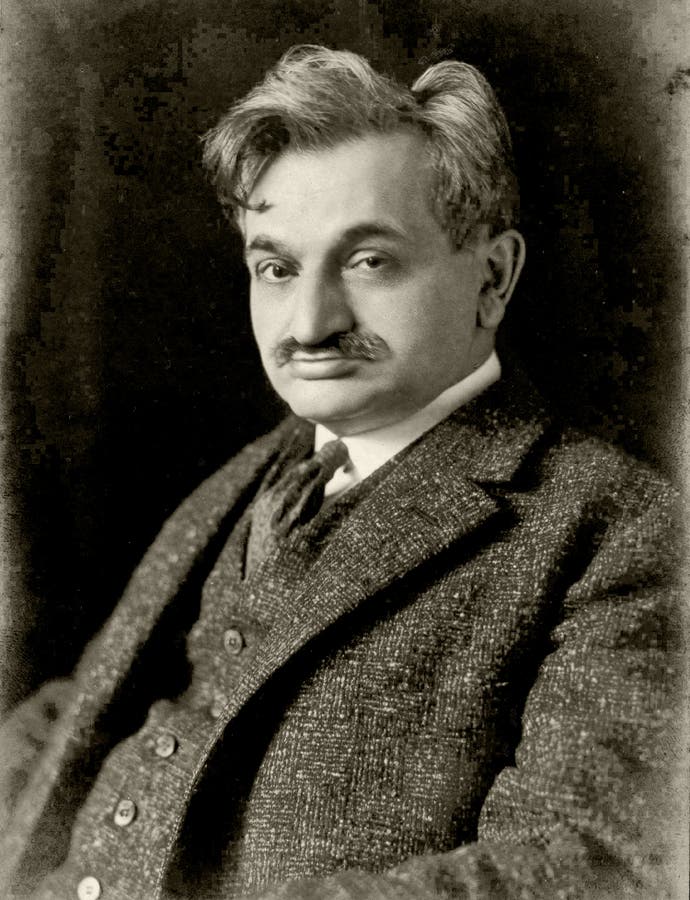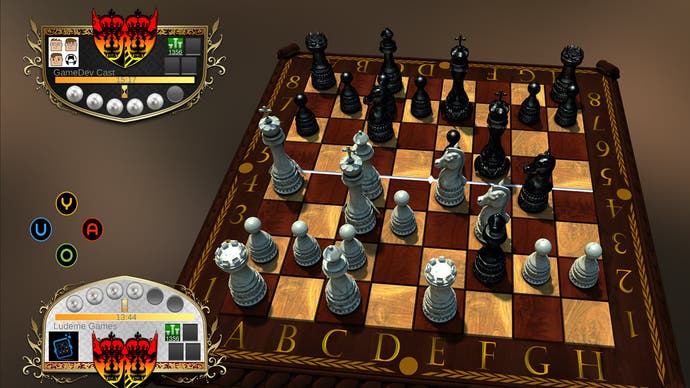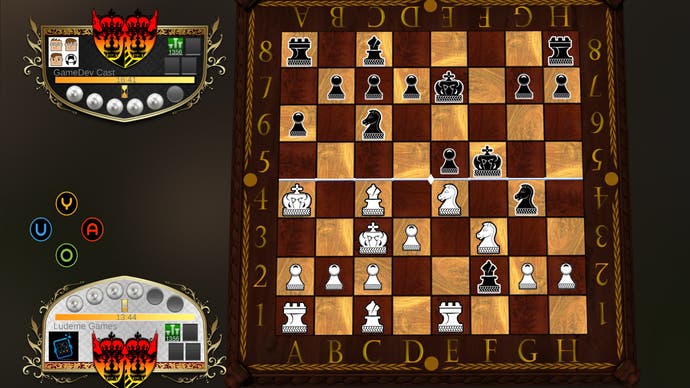Chess 2: The Sequel - How a street fightin' man fixed the world's most famous game
David Sirlin stepped in to stop chess growing stale.
Chess has problems.
Not for most of us, perhaps - not for the bluffers and the fudgers and the seat-of-the-pants players who prod a path through matchups in which each side's strategy is a winsome, wobbling comedy of errors. No, chess has problems at the grandmaster level. Those people who really love chess, that devoted few who have given their lives to it and for whom chess really should be a great game? They're not getting a great game - and they haven't been getting one for a while.
Chess, it turns out, has been in a bit of a rut for some time. "If you look at chess history, chess has actually changed a lot over the years," says Zachary Burns, the founder of Ludeme Games, and a man who's spent a lot of time thinking about this stuff. "It's continually been updated to adapt for the current needs of the people playing it. For example, at one time, it needed to be sped up, so the double pawn move was introduced and bishops were allowed to go much further. Chess has been changing forever, and it's only relatively recently the game has started to go stale because it's stopped changing. We're actually at a strange point in chess history. Emanuel Lasker predicted the sort of trouble we're having now more than a hundred years ago. He knew that if the game does not continue to evolve, we'd have problems."
And the main problem? At the very highest level of play, chess can often be a bit boring. Up at the tournament circuit, between the top 20 players in the world, you're looking at a draw ratio of almost 60 percent. More than half the games end with no winner. Where's the fun there?
"The reason for that?" asks Burns. "Yes, we've explored the game very deeply, but even beyond that, it's just kind of a draw-y game. Even if one player has clearly demonstrated superior play - let's say one player only has a king remaining at the end and the other player has a king and two knights - even though they're at a significant material advantage, that game might still be a draw because draws are built so heavily into the game mechanics." Even worse, games often end in resignation when an actual victory starts to loom on the distant horizon. Chess really is in an odd place, then. In fact, modern chess is at risk of being a game that only amateurs and intermediates can have much fun with.
Enter Zac Burns and - a few years before him - David Sirlin. Sirlin's a deeply intriguing figure, a design expert who looks a bit like Biff from Back to the Future and has a rare clarifying kind of intellect, capable of taking complex problems apart and revealing their hidden - their fundamental - simplicities. He's made card games and panda-based gambling games and has also written some of the wisest stuff on putting games together that I've ever read.. He's most famous, though, as the man who rebalanced Ken and the gang for Super Street Fighter 2 Turbo HD Remix.

Balancing multiplayer games is one of his enduring fascinations, actually, ensuring that every matchup has the potential to create viable options for all sides while resulting in something that's still deep enough to be strategically interesting at the expert level for years to come. Viable options, strategic interest, years and years of expert play. Put it like that and it's not surprising that a few years back Sirlin turned his attention to chess. The end result? Chess 2: The Sequel, a comprehensive rebuilding of a centuries old pursuit, which Burns is currently in the process of turning into a video game. "Chess 1 was a hit, no doubt about it," Sirlin writes in the introduction to his ruleset. Quite.
Sirlin created his sequel because he wanted to solve some of chess' most fundamental problems - and that meant tackling those draws head on. "The problem of draws is very well-known," he tells me over email. "If I were to make a completely new competitive game, then tell you that over 60 per cent of games played by experts ended in draws, and it takes like an hour to play, it would be rejected right away as a competitive game I think. At the very least, it would be a bad property that you'd want to fix. That's one issue with chess, though, and it seems to have gotten more extreme over time."
Draws weren't the only item on Sirlin's hit list, though. The game's heavy focus on memorisation was also starting to weigh everything down. Even grandmasters were complaining about it. "Of course any competitive game involves some memorisation, so the [grandmasters'] point wasn't that they wanted to reduce it to literally zero," Sirlin says. "Their point was that what really made them excited to play chess was adapting mid-game and using their intuition. As they got better and faced better opponents and chess evolved, the emphasis on memorisation became more and more extreme."

Chess 2's solution is broadly threefold and sounds, to a chess novice like me, gloriously heretical. Sirlin's design - which can be played with a traditional board and pieces - provides an additional victory condition known as the midline invasion, a new real-time mechanic called duelling, and the opportunity to choose from a range of six different armies at the beginning of the game. After years of working with Street Fighter, Sirlin's brought rosters to chess.
The new victory condition is the simplest, and most immediately satisfying, part of Chess 2. While games still often hinge on good old checkmates, you can now also win if you manage to get your king across the middle of the board. It's bold stuff when you see it in action: a proper NFL touchdown in the midst of a chess game! Aided by the removal of stalemates (run out of legal moves and you lose), the midline invasion makes for faster, more dynamic, and much more aggressive games.
"Midline invasion reduces the draws dramatically, but it also makes the game more climactic," says Burns. "Remember, high-level players will often recognise a specific ending coming together in current chess, and then finish the game at that time. That's not very fun if the game cools down at this strange place, and for amateurs, it adds to that memorisation tax. Midline invasion makes it exciting and interesting up through the very end of the game. A friend of mine who plays chess a lot, he said of Chess 2, 'in this game, the king really deserves their title.' I love that. It's more of an assault, and the king really does earn their place rather than being tucked back until the end of the game, often never to be used."
Next come armies. Six of them, allowing for 21 possible match-ups - and that's before you take into account the variations caused by playing as black or white. Sirlin's work here is dazzling. Alongside the Classic army that remains unchanged, you can choose from the likes of Nemesis, which turns the queen into a piece that cannot capture or be captured except by the enemy king, while pawns get a new nemesis move that allows them to head towards that king wherever they may be, or Empowered, which allows knights, bishops and rooks to gain the powers of other knights, bishops, and rooks whenever they're adjacent to them, but sees the queen downgraded to moving like a king. Elsewhere amongst the line-ups, you can expect to find a teleporting queen, a second king and a whirlwind move, and even a knight that can take its own pieces. Chess 2 is precision-honed but gleefully inventive.
"What I like about the armies is that they're all unique," Burns deadpans. "Each one has a core idea that ties it together and really allows a beginner to get their head around the game. Most people who know chess only need to play one match before they get what's going on here."
And again, armies emerged, in part, as a solution to the problem of memory tax. "In chess, there's many completely solved end-games that you have to know," explains Sirlin. "There's no actual strategy to them kind of by definition. It's knowing that when certain pieces are left, the game is definitely over as long as you know the correct sequence... So all that memorisation doesn't add decision-making, but it's a lot of tedious work you have to do to be good."

"It's not the game that we want the game to be," agrees Burns. "We want it to be a game of creativity and positional play. At the moment in traditional chess, you can improve the fastest by just memorising different openings and that doesn't seem right."
So if midline invasion helps to sidestep an over-reliance on existing end-games, armies are brilliant at tackling the opening games, too. "Bobby Fischer addressed that with his Chess960 variant, which is very interesting," says Sirlin. "He wanted to throw out the opening books by creating all sorts of different starting conditions. It's a good idea. I also threw out the opening books by having 21 different match-ups and each one of those with hugely more branches to the tree because of the bidding system. The idea is the same though, to put more emphasis on in-game thinking, reacting and improvisation."
"If the opening book of chess is large, the opening book of this is at least 21 times larger," says Burns. "It's laughably large. That makes it very impractical to establish opening books. It's a very beautiful solution, because with Chess960 you just shuffle things around. Here, the asymmetry actually introduces new elements to explore chess strategy, because the most interesting strategies come from positional play, which actually works off of different kinds of imbalances. Like if someone exchanges tempo, or how many moves they have, for material, or exchanging a space advantage for different kinds of pieces.
"These imbalances should help to dictate your plan as you try to make the most of your position and attack the weakness of your enemy's tradition. Asymmetry is perfect for this: it opens up a lot of interesting imbalances, and gets players into the right mode of thinking about what chess was supposed to be about at the beginning, at the start of the game. Without that memorisation you really start playing chess from the first move again."
Ah, asymmetry. Existing chess is almost symmetrical - the slight asymmetry comes from white getting to move first. The roster of armies means that Chess 2 is very, very different. "I just really like asymmetric games," Sirlin admits. "After being involved with them for so long, it's hard for me to play a symmetric game. There's a richness you get to having several sides or characters to choose from. All the different match-ups, and the specialists that become really good at a certain match-up. The different game dynamics you get from those match-ups are interesting too, giving you different feels when you go up against a different side. A generally good property of asymmetric games is that you only have to learn one side or character in order to participate in all the interesting dynamics of different match-ups. In other words, learning how to adjust your game against different armies is much less work than learning how to be good at your own army. So that's a good bang for your buck in variety that you get from an asymmetric game. It seemed natural to give chess the asymmetry that we see in other popular games such as Street Fighter, Starcraft, or Magic: the Gathering."
The final addition is duelling, a real-time double-blind bidding mechanic. To quote from the official Chess 2 rules, "Duelling allows you to spend a new resource called stones to threaten to destroy a piece that takes one of your pieces." Duels can be initiated whenever a piece is captured, and they work a little like rock, paper, scissors, with a hidden number of stones clenched in each player's closed fists and then revealed at the same time. All stones revealed are destroyed, and the winner is the player who showed the most stones. The long-term strategy comes from the fact that, when you're out of stones, players can still duel against you - and they win automatically.
"One of the good things about high-level positional play is the valuation of a given piece in a given situation," explains Burns, who seems to particularly love the addition of duelling. "We know that at the beginning of a game, a rook is worth five and a knight is worth three, say, but those values change over the course of a game. For example, if there are a bunch of light squared pawns and those pawns aren't able to move, a light squared bishop is going to have restricted mobility, so the value of that light squared bishop is low in that game. What duelling does is it allows players to debate over the value of those given pieces in a given game, and it lets someone who's good at that core skill of chess exploit that advantage more." Beyond that, duelling also adds an element of playing your opponent rather than simply playing the board. It's a leaf taken straight out of Street Fighter's book, if you want: real-time reading of your foe, real-time anticipation and reaction.

Sirlin's far from the only man who has reworked chess, of course. Over the years, there have been hundreds of variants, most notably the likes of Grand Chess and Chess960. "I've played a lot of variants," says Burns. "A lot of grandmasters have created their own variants. Chess 2 is the first one I know of that really looked at the game critically and asked: what are the problems that need to be addressed and how can we answer those problems? A lot of chess variants exist, I think, because of the first idea that popped into someone's head. Oh, let's do three-player chess, a circular chess board. This one really stands out as having come from a critical background."
And it's brilliant fun, too. I played my first few games of Chess 2 the other evening, using my old board and pieces and with the .PDF of Sirlin's rules close to hand for the rare occasions where things got confusing. An evening of Nemesis versus Classic was brisk and bloody. I'm an extremely poor chess player, and I'm glad to report the person I was playing turned out to be equally clueless, but even at our miserable level, chess seemed filled with new possibilities and driven by a faster, fairly thrilling speed of play.
Seasoned pros apparently adapt quickly to the new rules. "Against strong chess players, even if it's their first game, they will beat me," says Burns. "A good chess player doesn't just memorise the best moves, they understand why those moves are being made. That's the kind of knowledge that translates really well to Chess 2. Even when, sometimes the best move in Chess 2 is actually the opposite of what it would be in chess. Sometimes the logic leads you to an unusual conclusion. It comes down to whether you understand why the chess proverbs are what they are."
Burns is currently wrapping up work on the video game version of Chess 2. It will be out at the end of this year, available first on Ouya. Ludeme's game will offer what Burns describes as a "weak version" of AI and - more importantly - online multiplayer and ranked matchmaking. I can't wait, since it means I will no longer have to force friends into playing a game that requires them to read a six-page PDF before the first move. Burns is equally enthusiastic. "The best games I've had so far are against people that I've found online. That's one of the reasons I wanted to make this game, actually: I wanted to play it. I wanted to have an online experience to cultivate a community, so I could find opponents of my own skill level."
And, finally, what do the grandmasters make of the game? "I sent a tweet to Magnus Carlsen, the current number one," says Burns. "He didn't reply."









